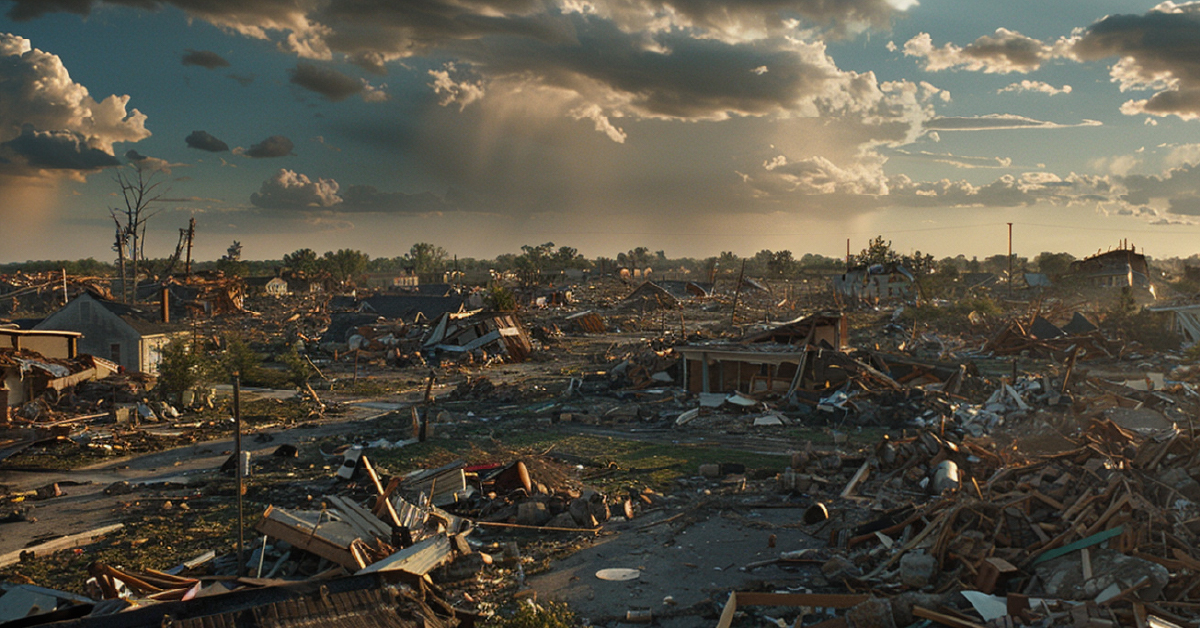CATEGORIES:
EF5 Tornadoes: A Devastating Force
March 26, 2024

When it comes to tornadoes, the EF5 tornado stands as a colossal force, unparalleled in its power and capacity for destruction. It’s the maximum measurable level for tornadoes on the Enhanced Fujita Scale. And they are certainly a phenomenon that defies the ordinary. With wind speeds exceeding 200 mph, these massive storms bring devastation and destruction with the ability to decimate large areas in minutes. Let’s unravel what makes an EF5 tornado so uniquely catastrophic and why understanding them is crucial for anyone living in tornado-prone areas.
The difference between an F5 tornado and an EF5 tornado is merely a matter of more precise measurements. In 2007, the newer scale was implemented to categorize tornado damage. The EF (Enhanced Fujita) does a more accurate job of scrutinizing degrees of damage that are aligned with specific wind speeds.
What Makes An EF5 Tornado the Strongest?
Understanding the sheer magnitude of an EF5 tornado becomes clearer when contrasted with its counterparts on the lower end of the Enhanced Fujita Scale. While an EF0 tornado, with wind speeds of 65-85 mph, can uproot trees and damage external structures, it pales in comparison to the EF5's devastating winds exceeding 200 mph. As we go up the scale, there is a significant increase in destructive potential, from the EF1's capability of overturning vehicles to the EF3's potential to completely lift and destroy well-constructed houses. However, the EF5 stands alone at the apex, capable of obliterating entire communities, stripping asphalt from roads, and hurling large objects such as vehicles and heavy machinery for considerable distances. This stark contrast in destructive power highlights the exceptional and catastrophic nature of EF5 tornadoes.
Luckily, EF5 tornadoes are extremely rare, representing less than one in a thousand of all U.S. tornadoes. Since 1950, there have been a total of 59 F5/EF5 tornadoes in the United States, which averages to less than one such tornado per year. This rarity, however, does not diminish their severity and potential for devastation. EF5 tornadoes are known for causing extreme destruction and a high number of fatalities. For instance, the most fatalities from a single F5/EF5 tornado were 158 in Joplin, Missouri, on May 22, 2011, marking it as the deadliest tornado in the U.S. since 1947. As of this writing, the most recent EF5 tornado recorded in the U.S. occurred in Moore, Oklahoma, on May 20, 2013.
How Damaging is an EF5 Tornado?
While an EF5 tornado produces enormous amounts of damage to homes, businesses, landscapes and life, having sufficient tornado protection is vital whether an EF0 or an EF5 tornado hits you. Also, having protection from tornadoes is essential no matter where in the US you live since tornadoes have occurred in every state. (To be fair, though, it is especially true if you live in tornado-prone areas like Tornado Alley or Dixie Alley.) Even the best-built and most robust homes are no match against tornadoes on the higher end of the EF scale.
To adequately protect yourself, your family, or your employees from tornadoes, it’s important to have an NSSA-approved storm shelter with a triple-locking steel door system with six locking points that is securely anchored. As a provider member of the NSSA, you can depend on Survive-A-Storm Shelters to deliver the safest storm shelter. Our competent tornado experts can match you with an above-ground or below-ground storm shelter that most closely fits your needs.
Call us today at 1-888-360-1942 or take a look at some of our most popular residential tornado shelters.



